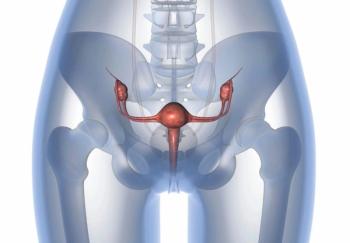
Leveraging Multidisciplinary Collaboration to Enhance RPT Benefit in Cancer

Radiopharmaceutical therapies (RPTs), which encompass an expanding array of precision medicines for cancer treatment, require greater expertise and more standardized guidelines. The Society of Nuclear Medicine and Molecular Imaging (SNMMI) published a paper in The Journal of Nuclear Medicine addressing this need, outlining the requirements for education, training, and experience to ensure the most effective delivery of these precision medicines.1,2
Specifically, the SNMMI emphasized a need for high-quality, safe administration of these agents, which lie in the hands of the practitioners involved in patient care. Holistic evaluation of patients through multidisciplinary teams may help to achieve these outcomes.
“Patient evaluation for and selection of RPT includes consulting with the authorized user to review relevant oncologic and medical histories, as well as laboratory and imaging evaluations, discussion of the risks and benefits of RPT in the context of available therapeutic options, and shared decision-making,” Heather A. Jacene, MD, clinical director of Nuclear Medicine/PET-CT and associate program director of the Brigham and Women’s Joint Program in Nuclear Medicine of the Dana-Farber Cancer Institute and associate professor of radiology at Harvard Medical School, wrote in the publication with coauthors.1
Additionally, the SNMMI suggested that the delivery of RPTs should adhere to each program’s quality management program, aligning with the Nuclear Regulatory Commission’s (NRC) mandates for quality control procedures for radiopharmaceutical equipment and scanners. Although some standards for individual departments may overlap with radiation safety programs, a greater adaptation of these program standards may bolster administration quality and mitigate the frequency of errors.
Moreover, regarding clinical trials, the SNMMI acknowledged how radiopharmaceuticals may be created by contracted organizations tasked with the research, development, and manufacturing of quantities for these patient-specific trials. However, strict regulatory requirements must be followed, and a qualified user must verify the release of the final radiopharmaceutical product. Furthermore, calibrated instrumentation for nuclear medicine is essential for the accurate measurement of radioactive administration, and in dosimetry for both sealed and unsealed sources, improperly trained practitioners may inaccurately measure the amount of radioactivity administered to tissue.
The role of numerous nuclear medicine professionals was outlined in the manuscript, encompassing the attending physician as well as other members of the multidisciplinary team. Specifically, the SNMMI stated that physicians who are authorized users under 10 CFR 35.390 may prescribe and deliver unsealed byproduct material requiring a written directive, and that these professionals may specialize in their use to diagnosis and treat cancers.
Comprehensive standards and clinical guidelines for nuclear medicine were outlined, beginning with the establishment of the Radiopharmaceutical Centers for Excellence Program in 2022. According to the authors, centers recognized under this initiative are identified as having the resources and experience required for “high-quality” RPT administration, with 2 levels differentiating a center’s level of engagement in research. A 2023 partnership between the SNMMI and International Accreditation Commission (IAC) built on the prior initiative to develop quality and safety standards for these agents, with accredited sites having demonstrated adherence to rigorous standards, policies, and procedures in delivering RPTs.
Regarding education and training, the authors also highlighted the SNMMI’s array of educational resources for supporting professionals involved with the delivery of RPTs. Examples of live, in-person events include the SNMMI Annual Meeting and Mid-Winter Meeting focusing on theranostics, as well as a Therapeutics Conference entirely centered on RPTs. Additionally, webinars covering numerous diagnostic and therapeutic nuclear medicine topics are offered by the SNMMI in collaboration with the American College of Nuclear Medicine. Furthermore, ventures such as the Value Initiative’s Workforce Pipeline and Life-Long Learning domain help to introduce nuclear medicine as a career choice from high school to medical school and reflect the SNMMI’s commitment to growing and developing a diverse workforce to provide equitable diagnostic and therapeutic nuclear medicine treatment.
Additionally, the Clinical Trials Network (CTN) offers programs aimed at supporting research and outreach, with examples including a PET/CT scanner validation program, quantitation services for the entire radiopharmaceutical pathway, and dosimetry training through the Research and Discovery domain’s Dosimetry Task Force. Published recommendations from the Artificial Intelligence (AI) Task Force established best practices for developing, training, testing, and implementing these tools into nuclear medicine practice. Furthermore, the SNMMI has established the Therapy Clinical Trials Network (TCTN) to help sites develop the infrastructure needed to participate in industry-sponsored clinical trials.
Outreach through SNMMI includes programs providing information about RPT benefits and safety as well as educational material for patients, healthcare professionals, and the general public. In collaboration with the Society’s Patient Advisory Board, the development of patient-accessible online resources and a day dedicated to patient education at the SNMMI Annual Meeting are included among other ventures such as a national public relations campaign, medical society meeting presentations, and educational road shows.
Finally, the SNMMI is tasked with harmonizing standards and guidelines for RPTs internationally to better promote consistency, mitigate variability, and improve patient outcomes when delivering these agents. Emphasizing the importance of collaboration, the SNMMI works alongside numerous international regional organizations, which include but are not limited to the International Atomic Energy Agency, World Federation of Nuclear Medicine and Molecular Biology, European Association of Nuclear Medicine, and the Nuclear Medicine Global Initiative. In addition, the SNMMI is continually strengthening established collaborative efforts beyond the nuclear medicine community, such as those with the American Association of Physicists in Medicine, to ensure sustainable access to these therapies.
“By harmonizing guidelines and standards across regions and specialties, SNMMI aims to promote safety, efficiency, and consistency in the delivery of RPTs," Jacene concluded with study coauthors.1 "Through interdisciplinary and multidisciplinary collaboration, nuclear medicine professionals can advance the field, innovate productively, and share and implement best practices worldwide."
References
- Jacene HA, Urbain J-L, Lewis JS, Nadel H, Bolin JD, Cutler CS. Radiopharmaceutical therapy: rapid growth, rising challenges, and the critical need for expertise. J Nucl Med. 2025;66(11):1-9. doi:10.2967/jnumed.125.271028
- Rapid growth of radiopharmaceutical therapy highlights need for expertise. News release. The Society of Nuclear Medicine and Molecular Imaging (SNMMI). November 11, 2025. Accessed November 12, 2025. https://tinyurl.com/3t7yth3s
Newsletter
Stay up to date on recent advances in the multidisciplinary approach to cancer.























































































